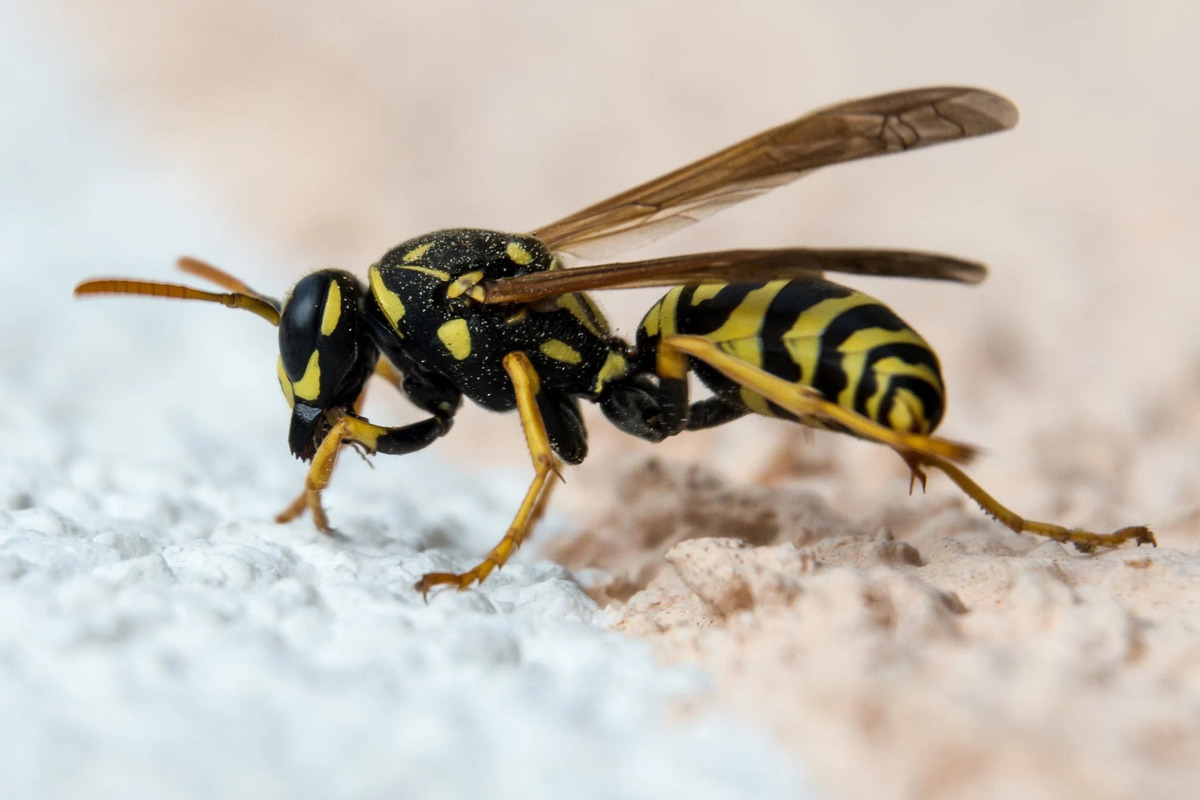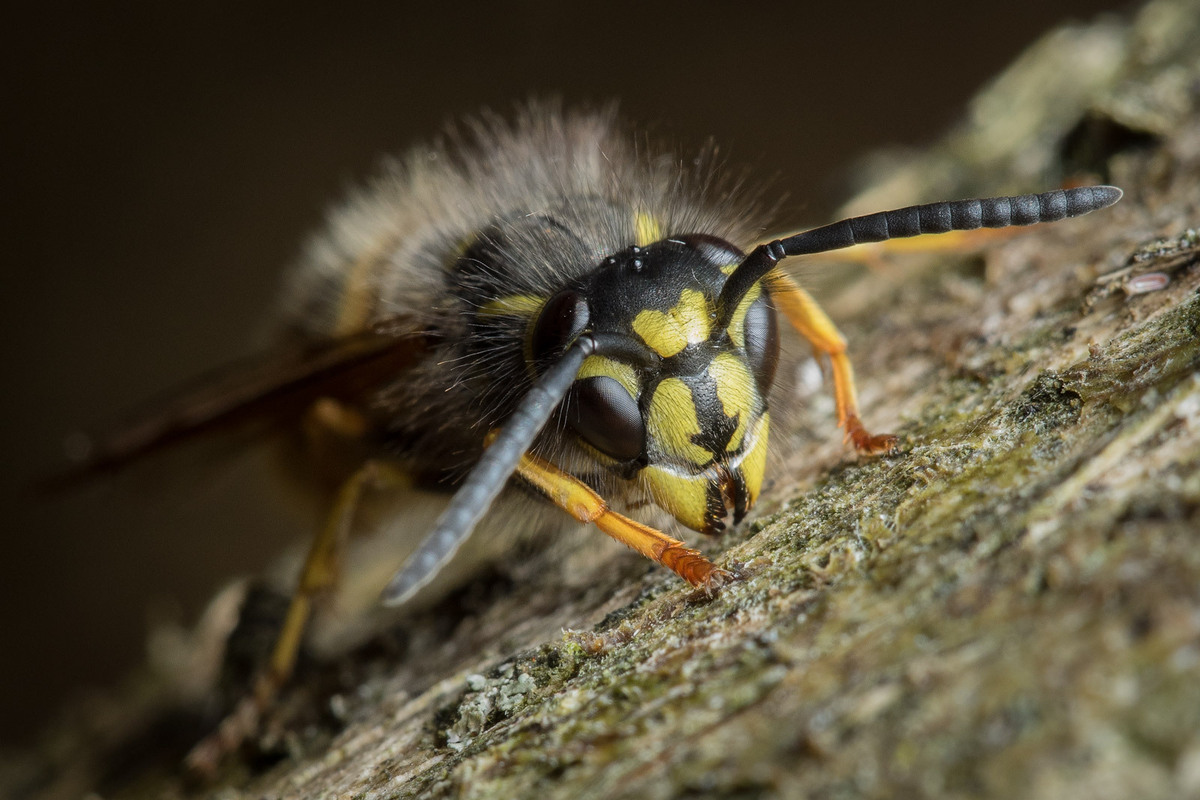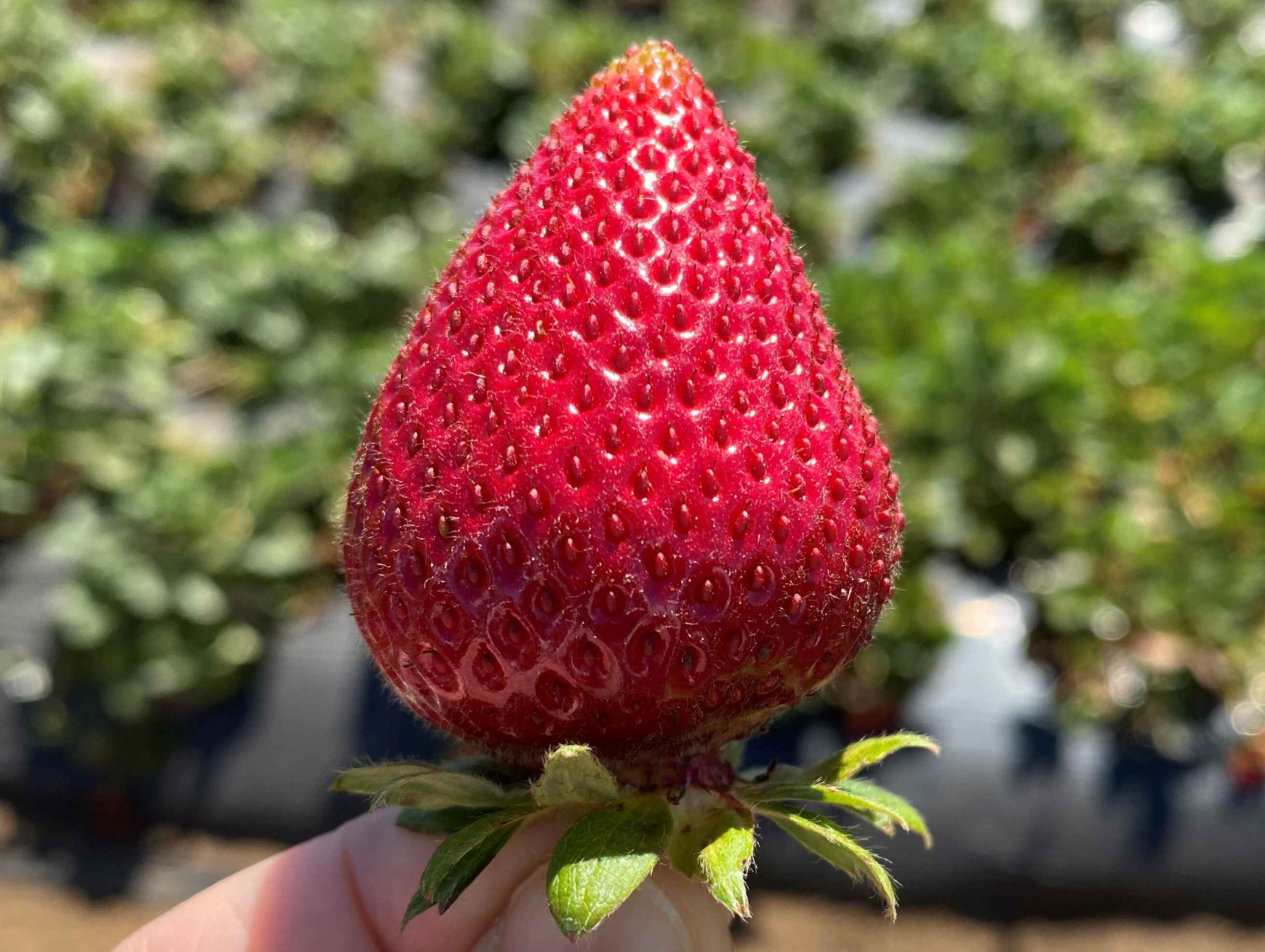Home>Gardening News and Trends>Latest News>What Insects Have A Stinger


Latest News
What Insects Have A Stinger
Published: December 1, 2023
Discover the latest news about insects with a stinger and learn which ones have this dangerous appendage. Stay informed and stay safe!
(Many of the links in this article redirect to a specific reviewed product. Your purchase of these products through affiliate links helps to generate commission for Chicagolandgardening.com, at no extra cost. Learn more)
Table of Contents
What Insects Have a Stinger
In the animal kingdom, insects have evolved various mechanisms to protect themselves and subdue their prey. One such mechanism is the use of a stinger. While not all insects possess a stinger, there are several species that do. These stinging insects have developed this defensive tool to inject venom into their enemies, serving as a means of self-defense or immobilization. Let’s take a closer look at some of the insects that have a stinger.
Bees are perhaps the most well-known insects that possess a stinger. They use this sharp organ as a defensive weapon to protect their hive and themselves. When threatened, bees will become aggressive and sting, injecting venom into their target. It’s important to note that honey bees, in particular, will die shortly after using their stinger due to the barbs on the stinger causing it to become lodged in the target.
Another insect known for its stinging abilities is the wasp. Wasps, like bees, use their stingers defensively. However, wasps are generally more aggressive than bees and can deliver multiple stings. The venom from a wasp sting can cause pain, irritation, and in some cases, allergic reactions.
Hornets, a type of wasp, are also equipped with a stinger. Hornets are larger and more formidable than regular wasps, and their stings are therefore more potent and painful. They are known for their aggressive nature when their nest is disturbed, making them a species to be cautious around.
Ants, while not as commonly associated with stingers as bees and wasps, also have the ability to sting. Certain ant species, such as fire ants, deliver venomous stings that can cause severe pain and allergic reactions. Fire ants are notorious for their aggressive behavior and can deliver repeated stings, with each one packing a punch.
Yellow jackets are another species of wasp that possesses a stinger. They are social insects, known for building paper nests and being aggressive when disturbed. Yellow jacket stings are painful, and their sting can be dangerous for individuals who are allergic to their venom.
Carpenter bees, despite their name, are not known for their ability to construct woodwork. However, they do possess a stinger, although they are generally less aggressive than other stinging insects. The male carpenter bees are unable to sting, while the female carpenter bees have the capability, although they typically only sting when provoked.
Tarantula hawks are a unique species of wasp known for their venomous sting. They are named after their hunting habits of capturing tarantulas to lay their eggs on. The sting of a tarantula hawk is incredibly painful and can result in paralysis for their prey.
Velvet ants, also known as cow killer ants, are actually a type of wasp despite their name. The female velvet ants are wingless and have a potent stinger. Their sting is known to be excruciatingly painful, hence the nickname cow killer. It’s important to note that male velvet ants are harmless and do not have a stinger.
In summary, there are several insects that have a stinger as a means of defense or immobilization. From bees and wasps to ants and hornets, these insects have developed this sharp organ to protect themselves and their colonies. Understanding their habits and behaviors can help us coexist peacefully with these creatures and avoid their painful stings.
Introduction
Insects are a diverse and fascinating group of creatures that inhabit our planet. From their intricate anatomy to their unique behaviors, there is much to discover and appreciate about these tiny organisms. One distinctive feature that some insects possess is a stinger, which they use as a defense mechanism to protect themselves from potential threats.
A stinger is a specialized organ found in certain insect species that enables them to deliver venomous or painful stings when they feel threatened or provoked. While not all insects have a stinger, there are several notable species that do. Understanding which insects possess this defensive weapon can help us navigate our interactions with them and minimize the risk of getting stung.
In this article, we will explore the world of stinging insects and delve into the various species that have a stinger. From familiar ones such as bees and wasps to lesser-known creatures like carpenter bees and velvet ants, we will examine their different behaviors, habitats, and the potential dangers they pose to humans.
By gaining insights into these stinging insects, we can better appreciate their role in the ecosystem and learn how to coexist with them. We will also discuss the sting itself—how it works, the effects it can have on humans, and what to do if you find yourself on the receiving end of a painful encounter.
Whether you’re a nature enthusiast, someone who wants to stay safe in outdoor environments, or simply curious about the world of insects, this article will provide you with valuable information about the insects that have a stinger.
So, join us as we embark on this journey to discover the fascinating world of stinging insects and gain a deeper understanding of their behavior, importance, and the impact they can have on both humans and the natural world.
Bees
Bees are perhaps the most well-known insects that possess a stinger. They are members of the Apidae family and are known for their important role as pollinators in the ecosystem. There are various species of bees, but the ones that sting are primarily honey bees and some types of bumblebees.
The stinger of a bee is actually a modified ovipositor, which is a reproductive organ found in females. However, only female bees have a stinger, as it serves a defensive purpose rather than reproductive. Male bees, also known as drones, do not have a stinger.
When bees feel threatened or their hive is disturbed, they will use their stinger as a means of defense. The stinger is barbed, which means that once it pierces the target, it remains lodged within the skin. This causes the bee to lose its stinger and ultimately leads to its death.
The venom delivered through a bee sting can cause localized pain, swelling, and in some cases, allergic reactions. For individuals who are allergic to bee venom, a bee sting can be life-threatening and requires immediate medical attention.
It’s important to note that not all bees are aggressive and likely to sting. Most bees are not interested in stinging humans and will only do so if they feel directly threatened or perceive a danger to their hive. It is best to remain calm and avoid abrupt movements when in the presence of bees to minimize the risk of getting stung.
Overall, bees play a crucial role in pollination and the sustainability of our ecosystems. While they do possess a stinger, it is important to respect and appreciate their presence in our environment, taking necessary precautions to coexist peacefully. Understanding their behavior and the reasons behind their stinging behavior can help foster a harmonious relationship between humans and bees.
Wasps
Wasps are another group of insects that are known for their ability to sting. They belong to the order Hymenoptera, just like bees, and are known for their slender bodies, smooth appearance, and bright colors. While some species of wasps are beneficial as they help control pest populations, others can be a nuisance and pose a threat to humans.
Unlike bees, both male and female wasps have a stinger. However, it is the female wasps that are more commonly associated with stinging. Wasps have a smooth stinger, which allows them to sting multiple times without losing their stinger.
When a wasp feels threatened or irritated, it will use its stinger to inject venom into its target. The venom from a wasp sting can cause pain, redness, and swelling at the site of the sting. In some cases, individuals may experience allergic reactions to the venom, which can be life-threatening and require immediate medical attention.
It’s important to note that not all wasps are aggressive or likely to sting. Some species, like paper wasps, tend to be less aggressive and only sting when they feel directly threatened. However, other species, like yellow jackets, can be more aggressive and more likely to sting even in non-threatening situations.
Yellow jackets are a type of wasp that are known for their aggressive behavior and painful stings. They are social insects that build nests in the ground or in structures such as buildings or trees. If their nest is disturbed, they can become highly defensive and attack in large numbers, posing a higher risk of multiple stings.
To minimize the risk of getting stung by wasps, it is important to be cautious around their nests and avoid provoking them. Wearing protective clothing, such as long-sleeved shirts and pants, can also provide a layer of protection when in areas where wasps are commonly found.
Overall, while wasps can be a nuisance and cause painful stings, they also play a significant role in the ecosystem. It’s important to understand their behavior, respect their presence, and take necessary precautions to minimize the risk of getting stung.
Hornets
Hornets are a type of wasp that falls under the genus Vespa. They are known for their large size, aggressive behavior, and potent sting. Hornets can be found in various parts of the world and are known by different names such as the European hornet, Asian hornet, or giant hornet.
Like other wasps, hornets possess a stinger, and it is the female hornets that are responsible for delivering stings. The stinger of a hornet is smooth, allowing them to sting repeatedly without losing their stinger.
When a hornet feels threatened or its nest is disturbed, it will aggressively defend itself by delivering painful stings. Unlike some other stinging insects, hornets have a potent venom that can cause intense pain and even allergic reactions in some individuals.
It’s important to note that hornets are generally more aggressive than other species of wasps, making their stings particularly concerning. Their larger size also means that their stings can be more painful compared to those of smaller wasps or bees. Additionally, the venom of certain hornet species, such as the Asian giant hornet, can be particularly dangerous and even potentially deadly.
In areas where hornets are known to be present, it is important to exercise caution and avoid disturbing their nests. If a hornet is encountered, it is best to remain calm and slowly move away without making any sudden movements.
If a hornet nest is located near human habitation or in a place where it poses a risk to people, it is recommended to contact professional pest control services to handle the situation safely and effectively.
While hornets can be intimidating and their stings can be painful, it’s important to understand that they also play a role in the ecosystem. They help control populations of other insects and contribute to the natural balance of their habitats.
By being aware of their presence and taking necessary precautions, we can coexist with hornets and minimize the risk of encountering their painful stings.
Ants
Ants are social insects known for their organized colonies and cooperative behavior. While most people may not immediately associate ants with stinging insects, certain ant species have evolved a stinger as a means of defense.
Ants that possess a stinger use it to inject venom into their target, causing pain and sometimes allergic reactions. The stinging ants belong to various genera, including Solenopsis, Pseudomyrmex, and Myrmecia.
One well-known group of stinging ants is the fire ants, which are primarily found in warm climates. Fire ants are highly aggressive and can deliver multiple stings in a short amount of time. Their venom contains toxins that cause a burning sensation, hence their name. Fire ant stings can result in painful red welts and, in some cases, severe allergic reactions.
Although not all ant species have a stinger, it’s important to be cautious around any ant mound or nest to avoid inadvertently disturbing them. When an ant colony is threatened, they may mobilize to defend their territory and deliver stings.
It’s worth mentioning that most ant species are not aggressive towards humans and will not sting unless provoked. However, it’s always advisable to exercise caution and avoid getting too close to ants or their nests in order to prevent potential stings.
Avoiding standing or stepping on ant hills and making sure food and sugary substances are properly sealed and stored can also help prevent attracting ants into living spaces.
Ants, while possessing a stinger in some species, serve important roles in ecosystems. They help with seed dispersal, soil aeration, and preying on other insects, playing a crucial part in maintaining the balance of their habitats.
By understanding the behavior and habits of ants, we can coexist with them peacefully and appreciate the valuable contributions they make to the natural world.
Fire Ants
Fire ants are a species of stinging ants known for their aggressive behavior and painful sting. They belong to the genus Solenopsis and are primarily found in warm regions, such as the southeastern United States and parts of South America.
Fire ants are reddish-brown in color and build large and intricate mound nests. These nests can contain thousands of individual ants, each with the ability to sting multiple times.
When a fire ant perceives a threat, it will swarm and attack in defense. Fire ants use their stinger to inject venom into their target, causing a burning sensation and intense pain. The venom of fire ants contains alkaloids that can cause allergic reactions in some people.
The stings of fire ants can result in the formation of painful red welts, which may develop into pus-filled blisters. These stings can cause discomfort and, in some cases, severe allergic reactions that require immediate medical attention.
Fire ant colonies are highly aggressive, and disturbing their nests can lead to a swarm of stinging ants. If encountering a fire ant mound, it is best to avoid provoking them and to maintain a safe distance.
Preventing fire ant infestations is important for those living in areas where they are prevalent. This can be achieved by regularly inspecting and treating outdoor spaces, removing potential food sources, and keeping vegetation trimmed.
In the event of a fire ant sting, it is important to clean the affected area with soap and water and apply a cold compress to alleviate pain and reduce swelling. Over-the-counter antihistamines and pain relievers can also be used to manage symptoms. However, if an allergic reaction occurs or if the sting is severe, seeking medical assistance is crucial.
While fire ants can be a nuisance and pose a risk to humans, it’s important to recognize their ecological role. They are omnivorous, feeding on a wide range of insect prey, including pest species. This behavior helps maintain ecological balance in their habitats.
Overall, being aware of fire ant behavior and employing preventive measures can help minimize the risk of painful stings and promote peaceful coexistence with these resilient insects.
Yellow Jackets
Yellow jackets are a type of wasp known for their distinctive yellow and black coloration. They belong to the genus Vespula and are found in various regions worldwide, including North America, Europe, and Asia.
Yellow jackets are social insects that live in colonies and construct paper-like nests. They are known for their aggressive nature when their nest is disturbed or they perceive a threat.
Unlike bees, yellow jackets have smooth stingers, allowing them to sting multiple times without losing their stinger. When a yellow jacket stings, it injects venom into its target which can cause pain, redness, and swelling.
Yellow jacket stings can be particularly painful, and allergic reactions to the venom can occur in some individuals. For individuals who are allergic, a yellow jacket sting can lead to severe symptoms and may require immediate medical attention.
It’s important to be cautious when around areas where yellow jackets are commonly found, such as picnic areas or garbage bins. Avoiding sudden movements and wearing appropriate clothing, such as long sleeves and pants, can help protect against potential stings.
Yellow jackets are also attracted to sugary foods and sweet beverages, so it is important to keep food and drinks properly sealed and covered when spending time outdoors.
If a yellow jacket nest needs to be removed, it is best to seek professional help as attempting to remove it without proper knowledge and equipment can result in stings and further disturbances.
It’s worth noting that while yellow jackets can be a nuisance and pose a threat to humans, they serve a beneficial role in the ecosystem. They help control populations of other insects, including pests, and assist in the pollination of flowers.
By understanding yellow jacket behavior and taking necessary precautions, we can coexist with these stinging insects and minimize the risk of encountering their painful stings.
Carpenter Bees
Carpenter bees, despite their name, are not actually known for their woodworking skills. These large, robust bees belong to the genus Xylocopa and are often mistaken for bumblebees due to their similar appearance. Unlike many other stinging insects, carpenter bees are relatively less aggressive and are unlikely to sting unless provoked.
Female carpenter bees possess a stinger, while male carpenter bees are unable to sting as they do not have a stinger. However, female carpenter bees are more focused on nesting and raising their young, and will only sting if they feel threatened or are directly handled. Even in such cases, their sting is generally mild and is not considered a significant threat to humans.
What makes carpenter bees unique is their habit of excavating tunnels in wood, such as tree trunks or wooden structures. These tunnels serve as nesting sites where the female carpenter bee lays her eggs and nurtures her brood.
While carpenter bee activity may lead to unsightly holes in wooden structures, they generally do not cause extensive damage or pose a structural threat. It’s worth noting that carpenter bees do not consume wood like other wood-boring insects such as termites.
To prevent carpenter bee infestations, it is advisable to seal and paint wooden surfaces to make them less attractive to these bees. Additionally, filling any existing carpenter bee holes with wood putty or caulking can help discourage their return.
It’s important to remember that carpenter bees are pollinators and play a crucial role in the ecosystem. They are involved in the pollination of various flowering plants, contributing to the reproduction and biodiversity of their habitats.
By understanding the behavior of carpenter bees and taking necessary precautions to protect wooden structures, we can coexist with these fascinating insects and appreciate their important role as pollinators.
Tarantula Hawks
Tarantula hawks are a unique species of wasp that are known for their impressive hunting habits. Contrary to their name, tarantula hawks do not actually prey on tarantulas. Instead, they use tarantulas as hosts for their larvae.
Female tarantula hawks have a potent sting, which they use to paralyze their prey. They locate and attack tarantulas, delivering a sting that temporarily immobilizes the spider but allows it to remain alive. The paralyzed tarantula becomes a living incubator for the wasp’s eggs.
Once the tarantula is immobilized, the female tarantula hawk will lay a single egg on the spider’s abdomen. The wasp larva hatches and begins to feed on the still-living tarantula. The larvae consume the non-vital organs of the tarantula to ensure it remains alive as long as possible, providing a fresh source of food.
The venom of a tarantula hawk sting is particularly potent and ranks among the most painful of all insect stings. However, humans are typically not the target of their stings unless they directly handle or provoke the wasps.
Encounters with tarantula hawks are relatively rare, as these wasps are solitary and not aggressive towards humans unless they feel threatened. It is best to give them space and observe from a distance, appreciating their unique role in the ecosystem.
While tarantula hawk stings can be excruciatingly painful, they generally do not pose a significant health risk to humans unless an individual has a severe allergic reaction. If stung, it is essential to clean the affected area and seek medical attention if necessary.
As daunting as tarantula hawks may seem, they serve an important ecological purpose. By controlling tarantula populations, they help maintain balance within their habitat.
Observing tarantula hawks in their natural habitat can offer a fascinating glimpse into the intricate relationships and strategies that exist in the animal kingdom. It reminds us of the diversity of life and the incredible adaptations that insects have developed for survival.
Velvet Ants
Despite their name, velvet ants are not actually ants but a type of wasp. They are also known as “cow killer ants” due to their powerful sting. Velvet ants are found in various parts of the world and are known for their vibrant and striking colors.
The females of the velvet ant species are wingless and possess a potent stinger. Their appearance is often eye-catching, with bright red or orange and black patterns that serve as a warning to potential predators.
Velvet ants are solitary insects that spend their lives searching for the larvae of other wasp species. They enter the nests of other wasps and lay their eggs on the unsuspecting hosts. Once hatched, the velvet ant larvae feed on the larvae of the host wasp.
Although their stinger is imposing, velvet ants are not overly aggressive and typically only sting when provoked or threatened. Nonetheless, their stings are known to be extremely painful, hence the nickname “cow killer ants.” The intensity of the pain from a velvet ant sting is said to rival that of a bullet ant sting, which is often considered the most painful of all insect stings. It is worth noting that male velvet ants do not possess a stinger and are harmless.
Encountering velvet ants in the wild can be a fascinating experience, but it is important to exercise caution and avoid handling or provoking them. Observe from a safe distance and allow these unique insects to go about their natural behaviors.
While their sting may be intimidating, velvet ants play a role in the ecosystem by helping control populations of other insects. They contribute to the balance of their habitats, ensuring the health and stability of the ecosystem.
As with other stinging insects, if stung by a velvet ant, it is important to clean the affected area with soap and water and apply a cold compress. Seek medical attention if necessary, especially if a severe allergic reaction occurs.
Velvet ants remind us of the intriguing diversity found within the insect world and serve as a reminder of the intricate interactions and strategies that have evolved over time. By respecting their presence and understanding their behaviors, we can coexist harmoniously with these fascinating insects.
Conclusion
In the world of insects, there is a diverse array of species, each with unique characteristics and adaptations. While not all insects possess a stinger, there are several species that have evolved this defensive mechanism to protect themselves.
From bees and wasps to ants and other intriguing creatures like tarantula hawks and velvet ants, these stinging insects exhibit a range of behaviors and stinging capabilities. Understanding their habits and potential dangers can help us navigate our interactions with them and reduce the risk of getting stung.
Bees, such as honey bees and bumblebees, are famous for their stinging ability. They use their stingers defensively and play a vital role as pollinators in our ecosystems. Wasps, including yellow jackets and hornets, are also armed with stingers and can deliver painful stings, especially when their nest is disturbed.
Ants, while not commonly associated with stinging, have species like fire ants that possess venomous stings. These aggressive ants should be approached with caution. Other insects, like carpenter bees, tarantula hawks, and velvet ants, have their unique stinging abilities and behaviors that are worth exploring.
It’s important to note that while stinging insects can be a nuisance and pose a threat to humans, they also play significant roles in the ecosystem. Many of them contribute to pollination, control pest populations, and maintain balance in our natural environments.
When interacting with stinging insects, it is advisable to remain calm, avoid sudden movements, and take necessary precautions to minimize the risk of getting stung. Wearing protective clothing, sealing food sources, and avoiding disturbances to their nests are essential strategies for coexisting safely with these creatures.
By understanding the behavior and ecology of stinging insects, we can develop a deeper appreciation for their existence. They remind us of the intricacies of nature and the fascinating adaptations that have evolved over time.
Ultimately, living harmoniously with stinging insects requires respect, caution, and an understanding of their importance in ecological systems. With this knowledge, we can strike a balance between appreciating their role in the natural world and taking measures to ensure our own safety and well-being.








